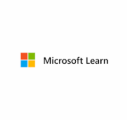- All
- Favorite
- Popular
- Most rated

Choose the right Azure service for deploying your Java application
Explore the service options for deploying Java applications to Azure, and choose the one that best addresses your team's needs.

Implement SaaSification techniques in Business Central
Do you want to learn about how to build your user interface using SaaSification techniques? Learn about properly building a good user interface and first trial experience for the users of your application.

Develop, test, and publish Azure Functions by using Azure Functions Core Tools
Use the Azure Functions Core Tools to create and run functions on a development computer and publish them to Azure.

Introduction to Azure Cosmos DB for NoSQL
Learn about the Azure Cosmos DB for NoSQL and determine if it is a good fit for your application.

Enable real-time updates in a web application using Azure Functions and SignalR Service
Change a JavaScript web app update mechanism from polling to push-based architecture with SignalR Service, Azure Cosmos DB and Azure Functions.

Introduction to .NET Aspire
Learn about the .NET Aspire stack in .NET 8 and how you can use it to ease and accelerate the development of cloud-native web applications.

Complete the report request page in Dynamics 365 Business Central
Do you want to learn how to complete the report request page for a report in Business Central? In this module, you'll learn about the report request page and how to create it.

Build a bot by using Teams Toolkit for Visual Studio Code
A bot, commonly called a chat bot, communicates with users through conversations. Users interact with bots by sending and receiving messages through a chat interface. In this module, you'll learn how to use Teams Toolkit for Visual Studio Code to build a bot for Microsoft Teams.

Create a long-running serverless workflow with Durable Functions
Learn how to orchestrate a long-running workflow as a set of activities using Durable Functions.

Explore the ecosystem and main components of finance and operations apps
Dynamics 365 offers a large range of cloud-driven applications that help organizations optimize their business so they can reach their full potential. This module explores the Dynamics 365 ecosystem and how the apps work together to help your organization reach its fullest potential. Additionally, this module describes the major components of finance and operations apps that are important for you to know before you begin developing.

Deploy Spring microservices to Azure
In this module, you'll go through tasks to deploy Spring Boot microservices to Azure Spring Apps (ASA). You can run this Microsoft Learn module with the monthly free grant from Azure Spring Apps.

Tooling, Git and GitHub products
This module provides an overview of Git, GitHub, and version control. It provides step-by-step guidance for performing basic tasks in GitHub.

Manage complex cloud deployments by using advanced JSON ARM template features
This module teaches you how to use advanced features of JSON ARM templates to perform secrets management and conditional deployments.

Design the data model of a report in Dynamics 365 Business Central
Do you want to learn how to build the data model for a report in Microsoft Dynamics 365 Business Central? This module will discuss the different components of a report data model.

Build serverless apps with Go
When you're authoring Azure functions, custom handlers allow you to use any language or runtime that supports HTTP primitives. In this module, you'll use the programming language Go and custom handlers.

Guided project – Create an AI travel agent
This module guides you through the steps required to develop a proof-of-concept AI Travel assistant with the Semantic Kernel SDK. By the end of this module, you complete a small chatbot application.

Design consistent .NET MAUI XAML pages by using shared resources
Learn how to use shared resources and styles in .NET MAUI XAML

Deploy a .NET microservice to Kubernetes
Microservice applications are composed of small, independently versioned, and scalable customer-focused services. Microservices applications deployed in containers make it possible to scale out apps, and respond to increased demand by deploying more container instances, and to scale back if demand is decreasing. In complex solutions of many microservices the process of deploying, updating, monitoring, and removing containers introduces challenges. This module explains some of those challenges and shows how Kubernetes can help.

Explore design and deployment considerations for finance and operations apps
Identifying design and deployment processes that conform to organizational policies will help you in developing for finance and operations apps, and ensure that code is deployed to the correct environments to avoid issues in production.

Write your first program in C++
Get familiar with the C++ programming language! Construct a C++ program and learn basic C++ syntax. Also, learn how to identify and correct common programming errors.

Improve how forms and validation work in Blazor web apps
Learn how to use forms in Blazor, add event handlers, and validate the data a user submits. By using Blazor form components you can validate client-side forms without writing client-side JavaScript to handle the validations.

Understand factors that influence HPC storage selection in Azure
This module covers various factors that influence HPC storage selection in Azure. We review NFS, file access, directory services, parallel file systems, and hybrid file-access considerations.

Get started with development using X++ in finance and operations apps
X++ is an object-oriented language. This module introduces X++ development for finance and operations apps, which is performed in Visual Studio.

Secure a .NET web app with the ASP.NET Core Identity framework
Add authentication and authorization to a web app using ASP.NET Core Identity, ASP.NET Core's native security framework.
In-Depth Exploration of Microsoft Learn
Microsoft Learn is an innovative online educational platform developed by Microsoft, designed to offer a wide range of free, interactive learning opportunities. It caters to individuals looking to enhance their knowledge and skills across various technological fields such as cloud computing, artificial intelligence, data science, and software development. Since its launch, Microsoft Learn has become a crucial resource for professionals aiming to stay ahead in the technology sector.Origins and Evolution of Microsoft Learn
Launched with the mission to make high-quality education accessible to everyone, Microsoft Learn initially focused on Microsoft’s core technologies, including Azure and Microsoft 365. Over time, the platform has broadened its scope to cover a wide array of topics, reflecting the ever-evolving tech landscape and diverse learner needs. This evolution has established Microsoft Learn as a central hub for tech education.Impact on Online Education
Microsoft Learn has transformed online education by integrating interactive and hands-on learning experiences. The platform’s key contributions include:- Hands-On Learning: Provides practical scenarios to apply knowledge.
- Interactive Elements: Includes labs, quizzes, and exercises that engage users actively.
- Personalized Learning Paths: Tailors educational experiences to individual goals and interests.
Key Features and Advantages
Microsoft Learn offers several notable features:- Free Access to Learning Resources: Enjoy comprehensive educational content without any cost, making high-quality learning accessible to all.
- Interactive Learning Experience: Engage with hands-on labs, quizzes, and real-world scenarios to apply and retain knowledge effectively.
- Extensive Course Catalog: Explore a wide range of courses in cloud computing, artificial intelligence, data science, and more.
- Personalized Learning Paths: Follow guided paths tailored to your career goals and interests for a customized learning journey.
- Certification Preparation: Access resources and practice tests to help prepare for Microsoft certification exams and enhance your professional credentials.
- Practical Application: Build confidence and proficiency through practical exercises that simulate real-world challenges.
- Integration with Microsoft Ecosystem: Utilize the latest tools and technologies within Microsoft’s ecosystem to stay updated with industry trends.
- Continuous Learning Support: Benefit from regularly updated content that reflects the latest advancements in technology.

